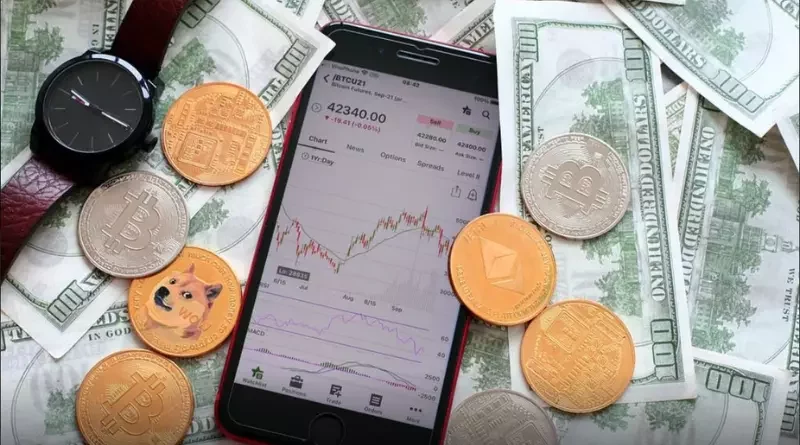What Determines the Bitcoin Price?
Bitcoin is a cryptocurrency and worldwide payment system. In 2017, the price of one Bitcoin was around $2,700. Fast forward to November 2021, the price of Bitcoin jumped over $60,000. Fundamentally, Bitcoin is unique in that there are a finite number of them: 21 million.
There can be a maximum number of 21 million bitcoins in circulation. Bitcoins aren’t printed like traditional currency. Instead, they’re produced by computers worldwide using free software and held electronically in wallets.
But when it comes to Bitcoin, there are a lot of questions. One question that seems to be on everyone’s mind is, “What determines the Bitcoin price?”. While there is no clear-cut answer to this question, a few factors can affect the price of Bitcoin.
In this blog post, we’ll take a look at some of those factors and try to understand better what determines the price of Bitcoin.
What Determines Bitcoin Price?
Bitcoin isn’t issued by a central bank or backed up by the government, so there’s no way to influence its value through conventional monetary policies. But Bitcoin still acts like other currencies in many ways; it can be used to store value and trade between two parties without the involvement of intermediaries taking their cut (which usually happens with traditional money).
Carl Runefelt is a global crypto leader and social icon who has put money into more than 350 crypto startups. He is a staunch supporter of Bitcoin and believes it will eventually replace fiat currency in the future.
While speaking on his YouTube channel, The Moon, he expressed, “In times of uncertainty, people increasingly turn to Bitcoin as a form of money and store of value because Bitcoin is the only money in the world that has no political attachment. Your bank money can get frozen, or your gold can get confiscated, but with Bitcoin, you can literally cross a border with your private keys in your head.”
Generally, these are the factors that influence the price of Bitcoin:
• The cost associated with the mining process of Bitcoin
• The supply and demand of Bitcoin in the crypto market
• The regulations surrounding the sale and use of Bitcoin
• The number of cryptocurrencies competing against Bitcoin
• The media coverage of Bitcoin – influential persons’ take on it
Supply of Bitcoin and Its Effects
The value of Bitcoin will always depend on the supply and demand for it. A sale with low-supply means that there are more people willing to buy up coins, which results in higher prices than if only a few were seeking ownership.
There will only ever be 21 million produced and created per year. The protocol only allows new bitcoins to be generated at a fixed rate which slows down over time. Bitcoin’s future supply is therefore dwindling, which adds to demand.
Carl Runefelt explains, “Bitcoin is actually the scarcest asset in the universe. There is no other asset out there that has an absolute finite supply like Bitcoin, “the 21 million Bitcoin limit.” Gold has inflation. You can always mine more gold. The dollar obviously has inflation. The Yen, and the Euro, all have inflation. Bitcoin has zero inflation.”
Price and Demand of Bitcoin
Since Bitcoin’s inception, its price has been volatile. However, over the past decade, the price of Bitcoin has been on a steady upward trend. This is due to a number of factors, including increasing mainstream adoption and institutional investment. As more people become aware of Bitcoin and its potential, demand for Bitcoin increases, driving up the price.
At the same time, the supply of Bitcoin is limited, contributing to price increases. While there is no guarantee that the price of Bitcoin will continue to rise, the current trend suggests that it is likely to continue doing so in the short term.
Bitcoins are attracting more curious investors as well. With high inflation rates in countries like Venezuela, many people see Bitcoin’s value increasing even further because it can be used to transfer large amounts of money without being tracked by governments.
Production Cost and Its Effect on Bitcoin
As for other commodities, Bitcoin’s price is also determined by production cost – in the case of Bitcoin, that is mining cost!
In fact, let’s put it this way: For Bitcoin, the production cost is approximately the sum of the direct fixed costs for electricity and infrastructure required to mine Bitcoin. At the same time, an indirect cost is related to the difficulty level of its blockchain algorithm.
So a bunch of miners compete with each other to solve a complicated encryption number. The ones who solve it first grab the reward of free Bitcoins – this reward system requires considerable processing power.
Conclusion
The price of Bitcoin is volatile and determined by many factors. The most crucial factor is the interaction of supply and demand in the market. The production cost also plays a role in setting the price, as miners sell their Bitcoin for more than the cost of production when demand is high.
While it can be challenging to predict the future movements of the Bitcoin market, understanding these underlying mechanisms can give you a better idea of what drives the price changes.



